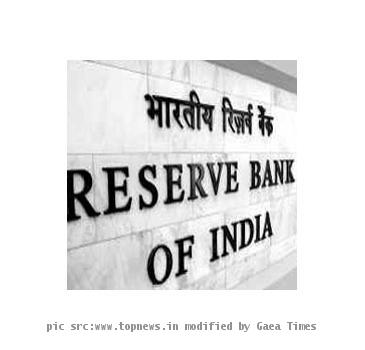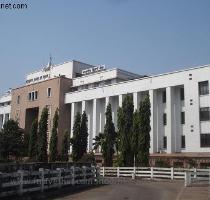RBI releases Summer 2010 issue of Its Occasional Papers
By RBIMonday, August 16, 2010
|
The Reserve Bank of India today released the Summer 2010 issue of its Occasional Papers (rbi.org.in/scripts/PublicationsView.aspx?id=12479) . Occasional Papers is a research journal of the Reserve Bank and contains contributions of its staff and reflects the views of the authors. These issues are woven around some important themes which are in the forefront of policy discussions. These issues also contain special notes and book reviews. This issue includes four papers. The first paper titled ‘Measuring Market Risk - An Application of Value-at-risk to Select Government Bonds in India (www.rbi.org.in/scripts/bs_viewcontent.aspx?Id=2246) ’ by G. P. Samanta, Prithwis Jana, Angshuman Hait and Vivek Kumar explores the role of Value-at-Risk (VaR), which is a widely used tool for measuring the market risk of asset portfolios. Banks, which adopt ‘internal model approach’ (IMA) of the Basel Accord, require to quantify market risk through their own VaR model. They need to maintain minimum capital for the quantified risk as prescribed by the regulator. A challenging task before banks and risk managers, therefore, has been the selection of appropriate risk model from a wide and heterogeneous set of potential alternatives. In practice, selection of risk model for a portfolio has to be decided empirically. This paper makes an empirical attempt to select a suitable VaR model for government securities market in India. Empirical results show that returns on these bonds do not follow a normal distribution – the distribution possess fat-tails and at times, are skewed. The observed non-normality of the return distributions, particularly fat-tails, adds great difficulty in the estimation of VaR. The paper focusses more on demonstrating the steps involved in such a task with the help of select bonds. The paper evaluates a number of competing models/methods for estimating VaR for selected government bonds. The paper also tries to address non-normality of returns suitably, while estimating VaR, using a number of non-normal VaR models, such as, historical simulation, risk metric, hyperbolic distribution fit, method based on tail-index. The paper by Sunil Kumar titled ‘Determinants of Real Exchange Rate in India: An ARDL Approach (www.rbi.org.in/scripts/bs_viewcontent.aspx?Id=2247) ’ attempts to identify determinants of real exchange rate in India. Apart from providing a theoretical background on possible determinants of real exchange rate, the paper tests their statistical significance using autoregressive distributed lag (ARDL) modelling approach. It finds that among the identified variables chosen a priori, based on theoretical arguments as determinants of Real Exchange Rate (RER), productivity differential, external openness, terms of trade and net foreign assets turn out to be statistically significant. The signs of the short-run dynamic impact have been found consistent with long-run coefficients and error correction term is negative and statistically significant implying convergence to a long-run equilibrium path. Since the fitted RER is found to be quite closer to the actual behavior exhibited by RER, the variables identified with certain lags could, therefore, serve as lead indicators of real exchange rate behaviour. On the basis of results, it may be found that appreciation in RER should not always be seen as a decline in international competitiveness of the traded sector as one of the factor contributing to the RER appreciation is attributed to higher growth reflecting an improvement in competitiveness. The paper titled ‘Determinants of Overnight Index Swap (OIS) Rates : Some Empirical Findings from an Emerging Market Economy, India (www.rbi.org.in/scripts/bs_viewcontent.aspx?Id=2248) in the Special Notes Section is by Saurabh Ghosh and Amarendra Acharya. It uses the financial sector variables over the last two years to analyse the determinants of the Overnight Index Swap (OIS) rates in India. The paper finds that among the financial variables considered, in the short run, G-sec rate and call rate had positive and significant correlation with the OIS rate, while inflation rate was not contemporaneously related with the OIS rate. The other factor that significantly causes the OIS rate movement is the liquidity conditions in the Indian money market, measured by the difference between the call and repo rate. These factors remained crucial even during and in the aftermath of the global financial crisis. The impulse response functions indicated that the market was resilient to shocks. The long run equilibrium relationship between OIS, G-sec and call rates was confirmed by existence of at least one cointegrating vector. The coefficient of G-sec rate in the estimated cointegration was found to be positive and significant. However, the coefficient of call rate was found to be negative and low. It could indicate that a high (low) call rate today was expected to converge to the long term market expectation as indicated by the OIS rate. The error correction term, though negative, was not found to be statistically significant at the conventional levels. This could be because of low volume in the OIS market. The paper ‘International Outsourcing from India: A Study (www.rbi.org.in/scripts/bs_viewcontent.aspx?Id=2249) ’ by Brijesh Pazhayathodi in Special Notes Section evaluates the nexus of international outsourcing from India. The paper finds that India has a revealed comparative advantage in exports of ITES-BPO services. It also explores the sources of India’s comparative advantage in this area. The authors state that rapid rise in world trade in services would provide a good opportunity to India to raise its share in world trade. However, IT infrastructure and general business environment are two areas where India clearly lags behind other competing countries in the outsourcing arena. Another important finding is that even though there is a lot of media attention on outsourcing sector in India and other developing countries, maximum surplus in services trade is actually generated by developed countries. Even though India maintains its lead status as a source country for a variety of IT related services, there are a number of emerging challenges like anti-outsourcing legislation and protectionism in Western countries, rise of competitor countries, etc. The paper cautions that to maintain its lead and capture new markets and areas for which Indian service industries should remain vigilant. Ajit Prasad Press Release : 2010-2011/248 |

